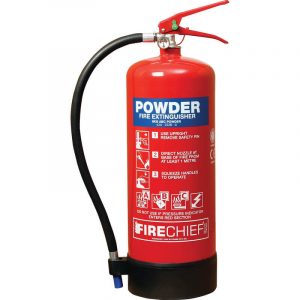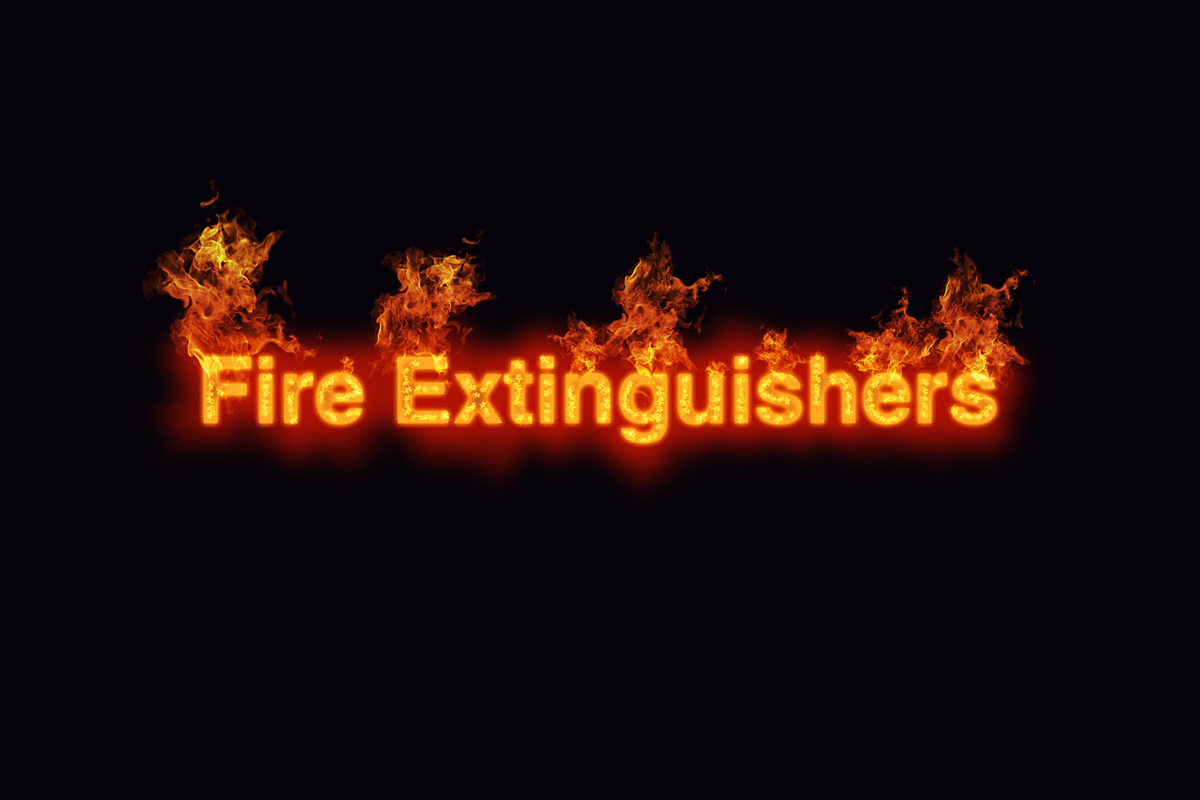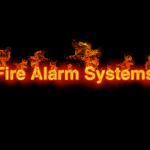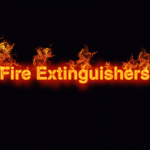A dry powder fire extinguisher is an extremely versatile extinguisher choice since it can be used on almost all fire types. That being said, it is not recommended to use a dry powder fire extinguisher in an enclosed space.
These fire extinguishers fall into one of the following types:
- Standard dry powder fire extinguishers
- Specialist dry powder fire extinguishers
Contents
- 1 Where Can Dry Powder Fire Extinguishers Be Used?
- 2 Where Can Dry Powder Fire Extinguishers Not Be Used?
- 3 How Do You Identify a Dry Powder Fire Extinguisher?
- 4 What Are Dry Powder Fire Extinguishers Also Known As?
- 5 How Do Dry Powder Fire Extinguishers Work?
- 6 What Are the Pros and Cons?
- 7 Who Needs Dry Powder Fire Extinguishers?
- 8 How Do You Use a Dry Powder Fire Extinguisher?
- 9 Our Services
Where Can Dry Powder Fire Extinguishers Be Used?
 A dry powder fire extinguisher can be used in a large variety of situations, these are as follows:
A dry powder fire extinguisher can be used in a large variety of situations, these are as follows:
Use of a standard dry powder fire extinguisher:
- Class A fires; fires that involve flammable solids like textiles, paper, and wood
- Class B fires; fires that involve flammable liquids, for example, paint, diesel, and petrol
- Class C fires; fires that involve flammable gases, for instance, butane or methane
- Electrical fires where the electrical equipment is up to a maximum of 1000v
Use of a specialist dry powder fire extinguisher:
- L2 powder extinguishers (and only this type) can be used for fires that involve lithium
- M28 powder extinguishers (and only this type) can be used for fires involving all remaining flammable metals
Where Can Dry Powder Fire Extinguishers Not Be Used?
A dry powder fire extinguisher is not to be used in any of the following situations:
- Class F fires; cooking fires, such as chip pan fires
- Fires that are in enclosed spaces
- Fires that involve electrical equipment which is over 1000v
- Fires that involve flammable metals (with the exception of specialist dry powder fire extinguishers)
How Do You Identify a Dry Powder Fire Extinguisher?
A dry powder fire extinguisher can be identified by using the following:
- There will be a BLUE-coloured label which will read – POWDER
- It should have an ID sign nearby which will read – POWDER EXTINGUISHER
What Are Dry Powder Fire Extinguishers Also Known As?
A dry powder fire extinguisher can also be known by one of the following names:
- Dry chemical fire extinguisher
- ABC fire extinguisher
- Multi-purpose fire extinguisher
How Do Dry Powder Fire Extinguishers Work?
A dry powder fire extinguisher forms a barrier that separates the oxygen source and the fire. Hence the fire is smothered.
Since this type of fire extinguisher does not actually cool the fire, a small chance of re-ignition exists.
What Are the Pros and Cons?
Pros
There are several pros to using this type of fire extinguisher, as follows:
- It will work on most fire types
- It can suppress a fire within a rapid timeframe
- Specialist dry powder fire extinguishers are the only extinguisher type that is to be used on flammable metals
Cons
The cons that exist with this fire extinguisher type are as follows:
- A residue can be left since the powder spreads over a large area
- There is a small risk of the fire re-igniting
- Vision can be obscured
- Inhalation can occur in enclosed areas
Who Needs Dry Powder Fire Extinguishers?
For outdoor environments where various fire type risks are present, such as fuel, vehicle, and chemical, a dry powder fire extinguisher is a very good choice. Such environments include the following:
- Large workshops
- Big commercial boiler rooms
- Garage forecourts
- Fuel tankers
- Flammable liquid storage facilities
How Do You Use a Dry Powder Fire Extinguisher?
Safety Note: You should NEVER use a dry powder fire extinguisher in any type of enclosed area
To safely use a dry powder fire extinguisher, use the following steps:
- Remove the safety pin and position yourself at a safe distance
- Point towards the base of the fire and then use rapid backward and forward movements with the jet
- In the case of an electrical fire, check if it is safe to switch the power off and do so if possible, then direct the jet of powder so that it is aimed right at the fire itself
Our Services
If you need servicing of your fire extinguishers, our accredited consultants will attend your sites at a time convenient to you. Contact us today to arrange a visit and decide on the future course of action.




